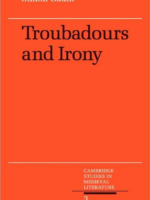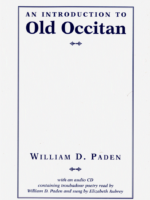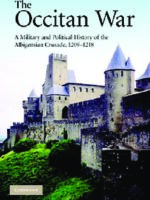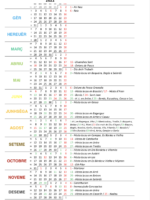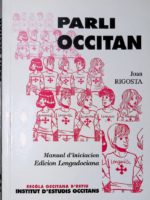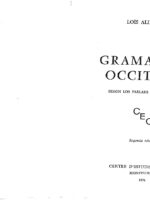Recommended Books
-
Troubadours and Irony
0,00 €From Petrarch and Dante to Pound and Eliot, the influence of the troubadours on European poetry has been profound. They have rightly stimulated a vast amount of critical writing, but the majority of modern critics see the troubadour tradition as a corpus of earnestly serious and confessional love poetry, with little or no humour. Troubadours and Irony re-examines the work offiveearly troubadours, namely Marcabru, Bernart Marti, Peire d’Alvernha, Raimbaut d’Aurenga and Giraut de Borneil, to argue that the courtly poetry of Southern France in the twelfth century was permeated with irony and that many troubadour songs were playful, laced with humorous sexual innuendo and far from serious; attention is also drawn to the large corpus of texts that are not love poems, but comic or satirical songs. New interpretations of many problematic troubadour poems are offered; in some cases the received view of a troubadour’s work is questioned. New perspectives on the tradition as a whole are suggested, and consequently on courtly culture in general. The author addresses the philological problems, by no means negligible, posed by the texts in question, and several poems are re-edited from the manuscripts.
-
An Introduction to Old Occitan
0,00 €An Introduction to Old Occitan is the only textbook in print for learning the language used by the troubadours in southern France during the Middle Ages. Each of the thirty-two chapters discusses a subject in the study of the language (e.g., stressed vowels, subjunctive mood) and includes an exercise based on a reading of an Occitan text that has been edited afresh for this volume. An essential glossary analyzes every occurrence of every word in the readings and gives cognates in other Romance languages as well as the source of each word in Latin or other languages. The book also contains a list of prefixes, infixes, and suffixes and a dictionary of proper names. An accompanying compact disc includes discussion of the pronunciation of the language, with illustrations from the texts in the book, and musical performances by Elizabeth Aubrey, of the University of Iowa.
-
Love and Death in Medieval French and Occitan Courtly Literature: Martyrs to Love
0,00 €Some of medieval culture’s most arresting images and stories inextricably associate love and death. Thus the troubadour Jaufre Rudel dies in the arms of the countess of Tripoli, having loved her from afar without ever having seen her. Or in Marie de France’s Chevrefoil, Tristan and Iseult’s fatal love is hauntingly symbolized by the fatally entwined honeysuckle and hazel. And who could forget the ethereal spectacle of the Damoisele of Escalot’s body carried to Camelot on a supernatural funerary boat with a letter on her breast explaining how her unrequited love for Lancelot killed her? Medieval literature is fascinated with the idea that love may be a fatal affliction. Indeed, it is frequently suggested that true love requires sacrifice, that you must be ready to die for, from, and in love. Love, in other words, is represented, sometimes explicitly, as a form of martyrdom, a notion that is repeatedly reinforced by courtly literature’s borrowing of religious vocabulary and imagery. The paradigm of the martyr to love has of course remained compelling in the early modern and modern period.
This book seeks to explore what is at stake in medieval literature’s preoccupation with love’s martyrdom. Informed by modern theoretical approaches, particularly Lacanian psychoanalysis and Jacques Derrida’s work on ethics, it offers new readings of a wide range of French and Occitan courtly texts from the twelfth and thirteenth centuries, and argues that a new secular ethics of desire emerges from courtly literature because of its fascination with death. This book also examines the interplay between lyric and romance in courtly literary culture and shows how courtly literature’s predilection for sacrificial desire imposes a repressive sex-gender system that may then be subverted by fictional women and queers who either fail to die on cue, or who die in troublesome and disruptive ways.
-
The Occitan War: A military and political history of the albigensian crusade (1209-1218)
0,00 €In 1209 Simon of Montfort led a war against the Cathars of Languedoc after Pope Innocent III preached a crusade condemning them as heretics. The suppression of heresy became a pretext for a vicious war that remains largely unstudied as a military conflict. Laurence Marvin here examines the Albigensian Crusade as military and political history rather than religious history, and traces these dimensions of the conflict through to Montfort’s death in 1218. He shows how Montfort experienced military success in spite of a hostile populace, impossible military targets, armies that dissolved every forty days, and a pope who often failed to support the crusade morally or financially. He also discusses the supposed brutality of the war, why the inhabitants were for so long unsuccessful at defending themselves against it, and its impact on Occitania. This original account will appeal to scholars of medieval France, the Crusades, and medieval military history.
LAURENCE W. MARVIN is Associate Professor of History at the Evans School of Humanities, Berry College, Georgia.

